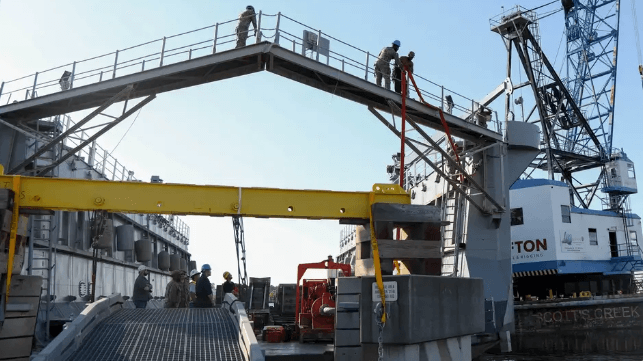US Navy Finds Gaps in Comms, Support Systems After String of Suicides

A command investigation into a string of four back-to-back suicides at the U.S. Navy's Mid-Atlantic Regional Maintenance Center (MARMC) has identified no direct connections between the incidents, except for one causal thread: access to firearms. "Access to personally owned firearms, and unwillingness to surrender access to lethal means, to include the use of gun locks, was a causal factor in the deaths of all four sailors," concluded the Navy's investigators. Contributing factors may have included a lack of coordination between caregivers and the MARMC command structure, as well as limited "warm hand-off" exchange of information about troubled sailors upon their transfer to the facility.
MARMC is a ship-repair support depot and drydocking facility in Norfolk, Virginia. At any given time it is home to several hundred servicemembers who have been reassigned from the fleet because of a physical or mental inability to serve on board, along with several dozen others who are awaiting separation. In October and November, four sailors attached to MARMC - ET2(SW) Kody Decker, ETSN Cameron Armstrong, MMFN Deonte Autry, and FC2 Janelle Holder - took their own lives using privately-owned firearms.
A counselor who was brought in to help out in the wake of the suicides last year told NBC that she was "inundated with the amount of hopelessness at that command." The Navy ordered a command investigation, and in its report released last week, the team found no direct correlation or connection between the incidents. However, it did find a troubling lack of communication between the local military treatment facility - where the deceased sought help - and the MARMC command's deployability coordinator.
The investigation team suggested that this lack of communication is not limited to MARMC, but may also be found in other commands like it. "The resultant information gaps led to blind spots with respect to individual [limited duty] Sailors which the CI Team characterizes as a contributing factor," the team reported. Likewise, the "absence of a thorough or thoughtful turnover/transfer" when transferring a troubled sailor to MARMC may be "creating blind spots" regarding each sailor's needs.
Beyond these adjustments in command policy, the team leveled a broader critique: it suggested that putting hundreds of limited duty sailors into a large maintenance center may not be the best way to rehabilitate them for regular duty status. The team noted that this appears to be reflected in service-wide performance. While the Navy's goal is to return limited duty personnel to their normal stations - where they are needed due to a serious recruiting shortfall - this only occurs 37 percent of the time.

that matters most
Get the latest maritime news delivered to your inbox daily.
A recent, parallel review by the Naval Audit Service found similar service-wide shortcomings in suicide prevention. Across the Navy, the audit found, commands have "failed to fully implement" the Navy's suicide prevention program guidelines. Auditors determined that required Crisis Response Plans had not been fully developed and annual crisis response drills had not been conducted.
These findings accompany a new HR policy memo from Secretary of the Navy Carlos Del Toro and CNO Adm. Mike Gilday, which enumerates basic new rights for enlisted sailors. These include (among others) a "deliberate strategy for strengthening their mental and physical health" and "access to full and direct support" if they cannot perform their duties.
